Good day.
For the past 5 years I have been a member of the Dundee Diehards. A small non profit reenactment group based in the small historical town of Dundee, South Africa. The group focuses on presenting history in a fun way while maintaining the historical accuracy as far as possible. The group was established in 1999 and has since then done a large variety of reenactments based around the Anglo boer and Zulu wars. They have also acted in various movies, documentaries and tv adverts. You can learn more about the group here https://www.facebook.com/dundee.diehards/
The most recent reenactment covered the Battle of Isandlwana. A great and famous battle between the British Empire and the Zulu Kingdom on 22 January 1879.
The battle took place roughly 11 days after the British had started its invasion of Zulu land. At the time the British had a force of about 1800 soldiers deployed in the area. The soldiers were equipped with the Martini- Henri, a breach loaded rifle, as well as two 7 pounder mountain guns and a Hale rocket battery.
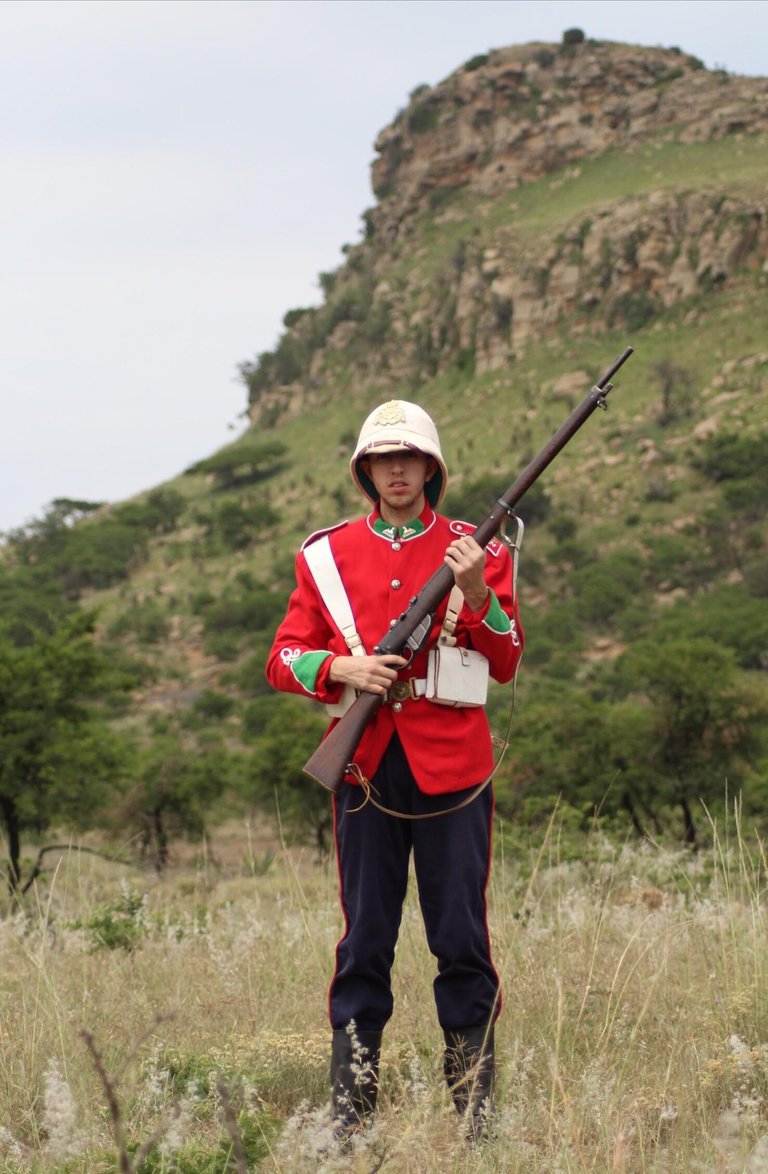 a photo of me dressed in British Red coat. A glimpse of The hill if Isandlwana in the back.
a photo of me dressed in British Red coat. A glimpse of The hill if Isandlwana in the back.
The Zulu forces were made up out of approximately 20 000 (15000 engaged at Isandlwana while 5000 were reserved for an attack at Rokes Drift close by)impi warriors who were know for their tribal warfare customs. A typical zulu warriors would be equipped with an Assegai (a spear traditionally used by the zulu and other Nguni tribes) as well as cow hide shields for protection. The Zulu warriors knew the African terrain quite well and often used that to their advantage when engaging in combat with soldiers armed with far more advanced weaponry. Some of the Zulu were armed with rifles, but due to their lack of training with such weapons it was of little use to them.
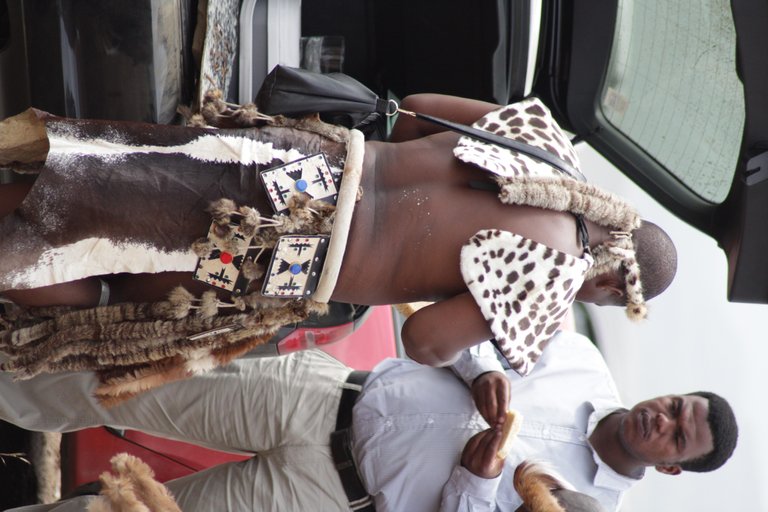 A zulu reenactor preping for the show. The clothing is commonly made out of cow hide and can be seen at all traditional events.
A zulu reenactor preping for the show. The clothing is commonly made out of cow hide and can be seen at all traditional events.
The over all commander of the British regiments in the area was Lt. Gen. Lord Chelmsford with subordinate commanders Bvt. Lt-Col. Henry Pulleine and Bvt. Col. Anthony Durnford . In the time leading up to the battle Lord Chelmsford was out searching for the Zulus, who used the terrain to out manoeuver him in an attempt to surround his troops. On the Morning of the 22nd, Bvt. Lt-Col. Henry Pulleine had received reports of Zulu sightings in the surrounding areas. Various other reports came in of several thousand zulu warriors progressing to the left of the British troops around the hill of Isandlwana.
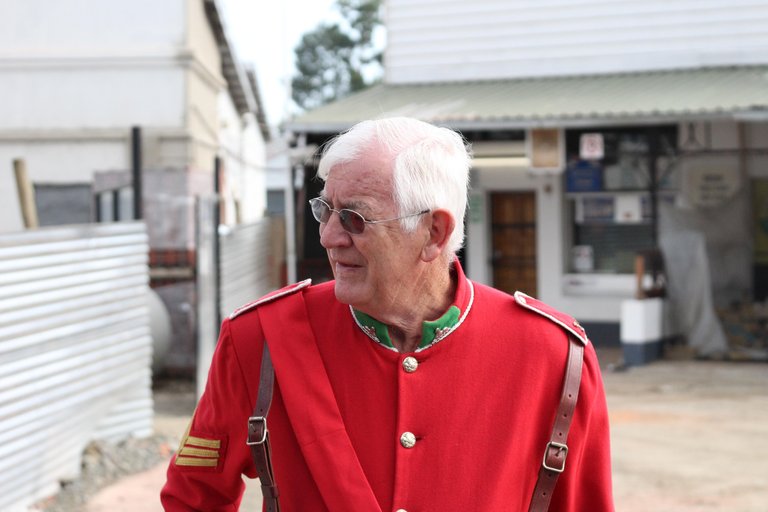 Our team leader Vince Nixon.
Our team leader Vince Nixon.
 Lt. Gen. Lord Chelmsford (photo sorced)
Lt. Gen. Lord Chelmsford (photo sorced)
Bvt. Lt-Col. Henry Pulleine sent word for Lord Chelmsford notifying him of the situation. A few hours after the first sightings Lt. Charles Raw and his scouts were chasing troops into a valley when they stumbled upon the main attack force who were patiently waiting in total silence for the attack to start. The Zulus immediately retaliated and attacked Lt. Raw and his men. They retreated back to camp and notified the rest of the force.
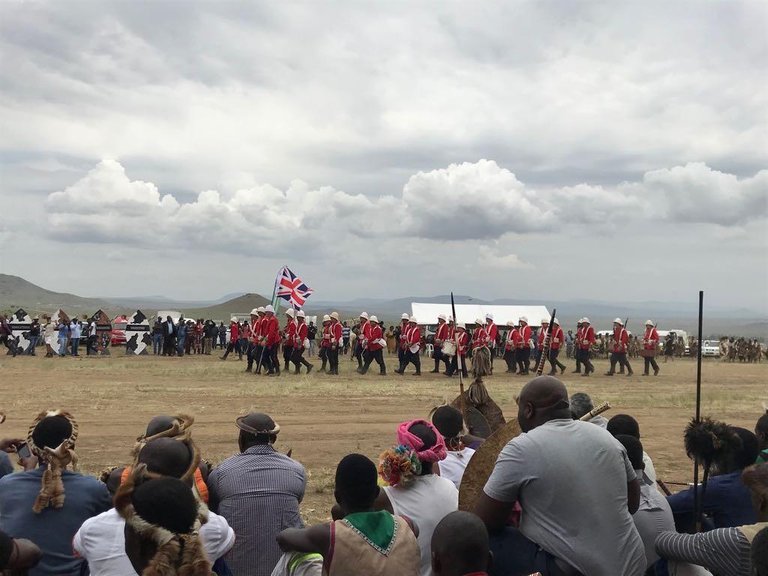 Marching into battle with the queens colours.
Marching into battle with the queens colours.
By now the Zulu force led by Ntshingwayo kaMahole Khoza had started their main attack using the traditional strategy of the horns and head of a buffalo. This tactic involved a large group of warriors to attack from the front (the head of the buffalo) while two smaller groups circle around the enemy flanks (the horns of the buffalo). The horns will proceed to close upon the enemy leaving them with very little chance for escape.
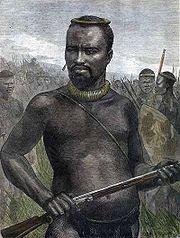 Ntshingwayo kaMahole Khoza (photo sorced)
Ntshingwayo kaMahole Khoza (photo sorced)
The British forces made use of firing lines as used in most battles of that era. A firing line was well disciplined. It was made up out of two ranks, a front rank and a rear rank. When engaging in a volley fire the front rank will recieve the command to kneel down while the rear rank takes a step to the side to position themselves into a standing position between the kneeling front rank. They will them receive orders to load, take aim and fire. This tactic was not the safest as a soldier was not allowed to take cover, but to face the enemy head on without showing any signs of fear.
 Some of our troops dressed in British red coat covering some drill before the battle.
Some of our troops dressed in British red coat covering some drill before the battle.
The battle continued for hours and stretched until the late afternoon. Despite their numbers the odds were not in favour of the British. The Zulu forces flanked the British troops using the horns of the buffalo and managed to kill approximately 1300 soldiers. The british artillery held back the Zulu warriors for quite some time, but even those were soon over run and captured. The Zulu forces lost around a thousand men throughout the Battle.
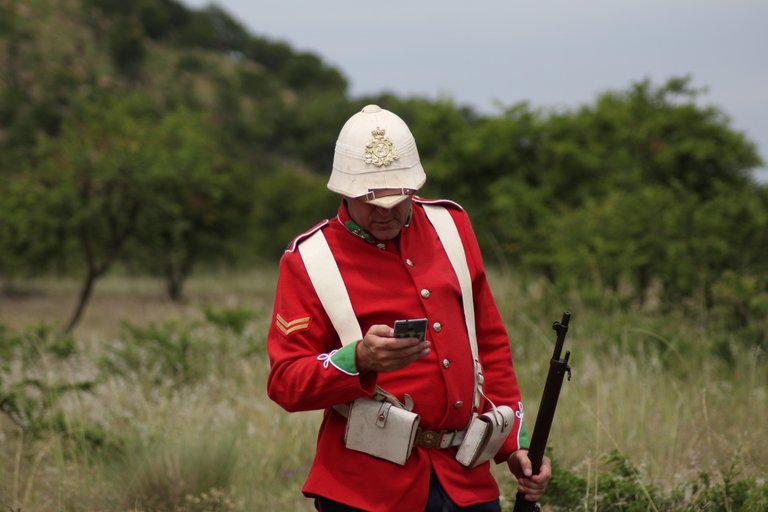 That technology is way ahead of your time soldier.
That technology is way ahead of your time soldier.
The battle led to a great victory for the Zulu Kingdom that successfully held back the first major British attempt at an invasion of Zulu Land. This was their biggest defeat against an indigenous army and in the end caused them to take a more aggressive approach at their invasion.
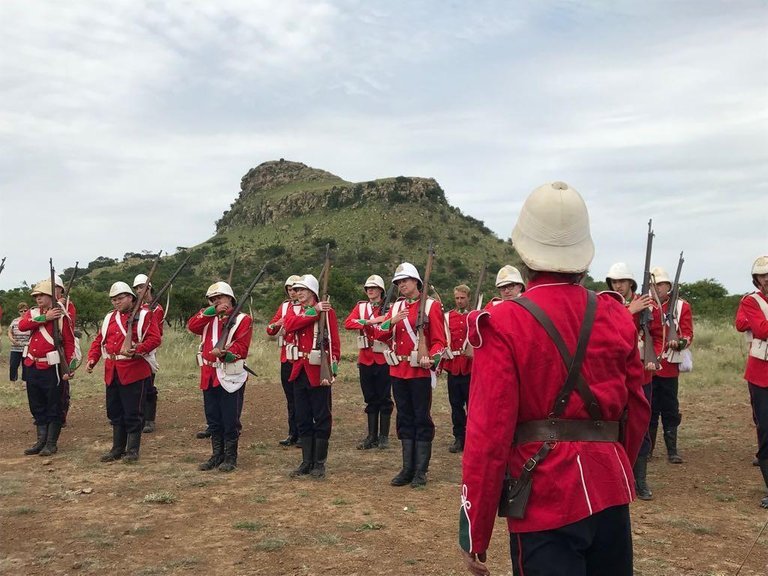 some more drill with the hill of Isandlwana in the background. A lot of the soldiers stationed at Isandlwana campaigned in Egypt before. They said the hill reminded them of the Sphinx and that it was a bad omen.
some more drill with the hill of Isandlwana in the background. A lot of the soldiers stationed at Isandlwana campaigned in Egypt before. They said the hill reminded them of the Sphinx and that it was a bad omen.
A little known and very interesting fact about this specific battle was a first hand account by one of the soldiers in which he stated the following.
"In a few seconds we distinctly saw the guns fired again, one after the other, sharp. This was done several times – a pause, and then a flash – flash! The sun was shining on the camp at the time, and then the camp looked dark, just as if a shadow was passing over it. The guns did not fire after that, and in a few minutes all the tents had disappeared."
A similar eyewitness account was made by a zulu soldier.
"The sun turned black in the middle of the battle; we could still see it over us, or should have thought we had been fighting till evening. Then we got into the camp, and there was a great deal of smoke and firing. Afterwards the sun came out bright again."
There was a solar eclipse on the day of the Battle at about 2:29 pm. It has been said that the Zulu warriors thought of this as approval from the gods and gave them even more courage.
The Defence of Rokes drift took place later that day, not too far away from isandlwana. The british managed to defend a small mission station from a zulu attack. Just over 150 British troops managed to hold back a Zulu force of 3000/4000 men. I plan on doing an article on that in the near future.
The photos in this article were taken by myself and some members of our team. More can be found online and on social media sites by using the Isandlwana tag. I do apologize for some reason the photos taken in portrait mode refused to display correctly.
I hope you enjoyed this article as much as I did.
Have a great day.
Joshua Baxter.
Capital! I had no idea that there was a historical re-enactment group in Dundee. Three cheers for all the brave men who fell on that bloody day, and three more for you and your comrades!
The group has been around for quite some time, feel free to contact the group via the facebook page for information on joining... offers quite a lot of fun. Have a great day
Thanks, unfortunately I cannot join as I live in Gauteng, but I appreciate your posting the event.
Awesome! You look so cute!
Thanks my love😊... @Yogidream.scapes
That must have been a horrific battle!
It was indeed. The Zulus were extremely superstitious and therefore believed that they must release the spirit of a person from it's body so that it won't haunt them. To release the spirit they would cut open the stomachs of fallen soldiers. You can only imagine what a terrible scene that must have been. @kaminchan
Hi! I think you are working so hard!!
I would like to see more photos of all the cats and their funny acts!
Just photos will do, because you need the time to work and rest!
Cheers.
Congratulations @joshuabaxter! You received a personal award!
You can view your badges on your Steem Board and compare to others on the Steem Ranking
Vote for @Steemitboard as a witness to get one more award and increased upvotes!